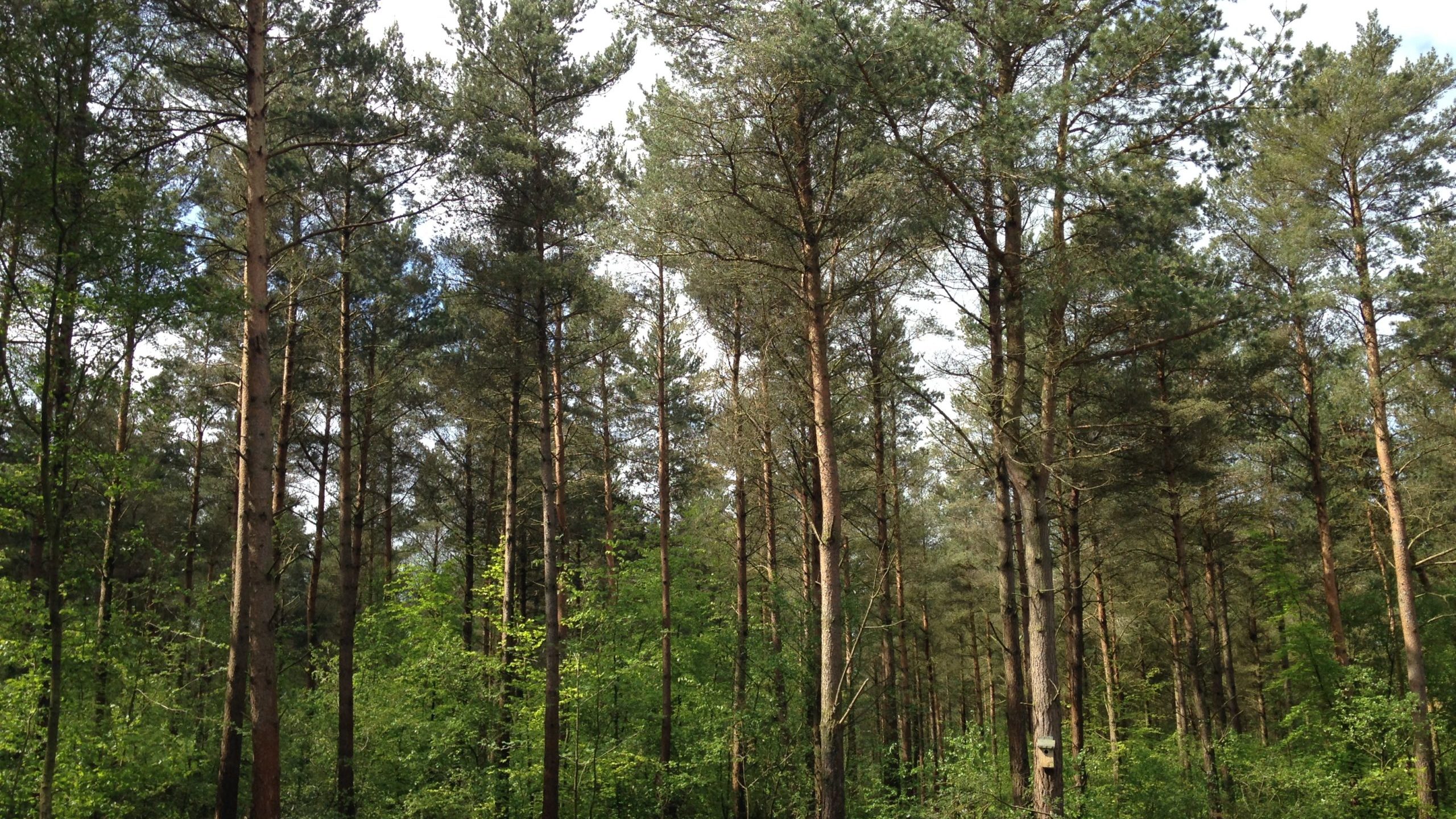Warren and Lalbuss Plantations
This woodland has been managed according to principles of continuous cover forestry, which over time will transform the plantations into an irregular and more diverse structure.

Warren and Lalbuss Plantations, owned by Orlando Finzi and Managed by David Robson MICFor (Egger Forestry Ltd)
Silver Award: Excellence in Forestry 2016
The Site
This 91ha woodland, located between Penrith and Carlisle, Cumbria, comprises two plantations – Warren and Lalbuss.
Orlando Finzi has owned the woodland since 2012 and worked with David Robson of Egger Forestry Ltd to develop an approved management plan. The woodland was established as a mix of commercial species, predominantly pine, larch and spruce, with some broadleaved species.
The owner and manager have opted to manage the woodland according to the principles of continuous cover forestry (CCF), which over time will transform the plantations into an irregular and more diverse structure.
Philosophy
The owner wishes to manage the forest as a commercial proposition. Species mix is kept high to improve the resilience and future economic viability of the forest. Both the owner and manager aim to keep a high proportion of the mix for income generation while maintaining a good proportion of broadleaf species.
There has been significant investment in planning, infrastructure, and monitoring of the work undertaken. As a result, the site is being brought under more active management, and its economic viability should increase accordingly.
Infrastructure
A poor pre-existing network of roads and tracks has been supplemented by over 2000m of new roads and forwarder tracks to improve access for operations. In addition, ramps have been built to allow machine access from the forest with minimal verge or roadside drain damage.
The forest edge has been pushed back from the road to enhance verge habitats and minimise unnecessary road by ensuring forest machinery is not forced to use metalled tracks.
The site is around 150m above sea level but is flat and with poorly-drained, heavy clay soils.
As a result, an extensive network of drains (10 km) has been maintained and supplemented to remove surface water more directly and improve rooting depth. This will improve tree health, minimise damage by heavy plant operations, and preserve the soil structure, stabilising the crop – critical for subsequent thinning operations.
Racks
The management of Warren and Lalbuss is assisted by well-defined access racks cut at 15 m spacing. This enables harvesters (working range approximately 8m) to reach in and remove selected trees from between racks and minimise disturbance of soil or new growth between. The clay soil can lose its structure and risks becoming unworkable when compacted or rutted by forest machinery. The provision of regular racks helps minimise this, along with the use of harvesting brash.
The racks are designed to slow wind through compartments, seeking to avoid straight lines. This is especially important in historically undermanaged areas of the woodland where the risk of windthrow is higher and enhances visual amenity and deer stalking. The storms of December 2015 did not cause excessive damage; evidence that the system is working.
Thinning takes place over a number of stages. The first is the removal of stems to form access racks to create a working matrix. The target is to reduce basal area (and therefore canopy shade) to encourage natural regeneration; this is capped to reduce the risk of windthrow. The required parameters to encourage successful natural regeneration are unlikely to be achieved in one thinning intervention.
Once the racks are established, subsequent thinnings can take place within the matrices according to a planned thinning progression. Trees showing good form and/or potential to become good seed trees are selected by the owners and manager to be retained; the harvester then removes enough other material to reduce the basal area.
Regeneration
As more thinning takes place, more light reaches the forest floor, and natural regeneration is encouraged to develop. Careful thinning control is essential; progress is monitored and stands re-measured once marked and thinned. Generally, there is a difference between the light levels required to stimulate seedling regeneration and the seedlings’ healthy apical growth.
Initially, the basal area is reduced just enough to foster regeneration but still suppresses the growth of grass, bracken and brambles, which would out-compete the seedlings. Left at these light levels, however, seedlings would struggle to develop.
Subsequent thinnings are then required to further reduce stand basal area, allow more light into the understory and release the seedlings. The young trees now have enough space and light for healthy apical growth. This was remarkably clear in areas that had had this thinning treatment, and regeneration is responding well.
Where, despite best efforts, regeneration is poor, enrichment planting may be required to achieve desired stocking densities.
Pests and Diseases
Natural regeneration is key to CCF, but, unfortunately, it also provides easy food for browsing animals. Some compartments of the forest are protected by heavy deer fencing, especially where thinning for regeneration has recently taken place, and seedling density can be expected to be high.
In other areas, the need for deer exclusion is less marked. Deer are controlled by shooting, and there has been a recent increase in the numbers taken to reduce grazing pressure on young trees. A red squirrel population has long been present and is actively encouraged, including grey squirrels, which can migrate in are trapped or shot with help from the local red squirrel group.
There are no significant diseases on-site. Larch and pine, which are at risk from Phytophthora ramorum and Dothistroma Needle Blight (DNB), respectively, are supplemented by Douglas fir and Sitka spruce.
Although there are concerns about Sitka spruce’s long-term viability on some sites in Britain with climate change projections, the latest ecological site classification indicates that this species should remain highly productive at Warren andLalbusswoods for one, possibly two more rotations.
Conclusion
Warren and Lalbuss is a wonderful example of forest management in the early 21st century. The key is a well-thought-out plan written with detailed knowledge of the site, understanding of the aims and careful monitoring of results. This is supported by up-to-date technology for measuring, planning and infrastructure improvements.
Judges commented: “Timber production and capital value are important drivers in these woodlands, and there has been significant investment in infrastructure. This has allowed the owner to bring the somewhat neglected stands of pine, larch and spruce into active management, and the woods are now generally well thinned and filled with thriving natural regeneration…
“Management is of a very high standard and based on robust inventory data. Thinning control is guided by published guidance on light levels, and the response of conifer regeneration is monitored by assessing the leader to lateral shoot ratio. All thinnings are marked by the forester and the hands-on owner, with whom there is clearly a dynamic and productive relationship.”
Author: Mike Page
Duke of Cornwall Category Sponsers:



